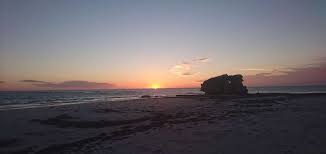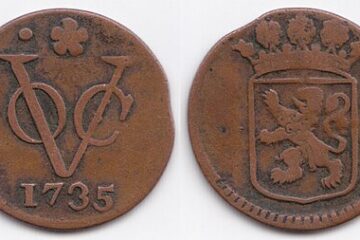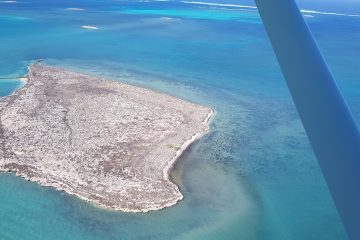Abraham Leeman van Santwitz (Santwits, Santwijk), a 17th-century Dutch sailor, embodies the spirit of resilience and leadership in the face of overwhelming adversity. His experiences as a navigator with the Dutch East India Company (VOC) are a testament to the perils and challenges of maritime exploration during this era, particularly in the treacherous waters near the Great South Land, now known as Australia.
The small coastal town of Leeman in Western Australia as well as its library are named after him.
The Wreck of the Vergulde Draeck

In the pre-dawn hours of April 28, 1656, the Vergulde Draeck (Gilt Dragon) struck an uncharted reef off the coast of what is now Western Australia on its voyage to Batavia (now Jakarta). The ship, carrying a valuable cargo, sank near Ledge Point, approximately 107 kilometers north of present-day Perth. Navigation errors, compounded by the difficulty of calculating longitude accurately, made such tragedies common. The VOC had already lost 168 ships in the preceding decade.
In the chaotic aftermath, Captain Pieter Albertszoon tasked Leeman and seven others with sailing a small open boat to Batavia to seek help. Against all odds, they arrived in Batavia in June 1656, after a grueling month at sea. They brought news that 68 survivors, including the ship’s captain, were left on the shore of the Southland.
The Rescue Attempts
Governor Joan Maetsuycker of Batavia swiftly dispatched two ships to rescue the survivors and salvage the cargo. However, the southern hemisphere’s winter storms thwarted the search efforts, resulting in further loss of life. Despite an extensive search along the shoreline and partway inland, there was no sign of the Vergulde Draeck or the survivors. The rescue attempt had not only failed, but it had also resulted in another 11 crewmen disappearing while searching onshore.
Maetsuycker faced a difficult decision but chose to make a final attempt in January 1658. To give this final expedition its best chances, Maetsuycker sent Abraham Leeman and two fast, smaller ships and chose the summer months of January to commence the journey in the hope of better weather in the south.
The Return to the Wreck
By March 1658, the search had yielded little success. The Waeckende Boey faced its own challenges, including fierce winds and surf. Leeman, now the first officer, and his crew, having found debris and possible signs of survivors, were stranded when the ship failed to return for them. Over seven days, they survived on seal meat, seaweed, and seabirds, facing dehydration and despair.
Realising that rescue was unlikely, Leeman led his men on an audacious open-boat journey back to Batavia. Despite severe hardships, including a damaged boat, scant supplies, and the death of three crew members, Leeman’s leadership and faith kept hope alive. They navigated by the stars, enduring immense suffering until they finally reached Java on April 29, 1658. After a grueling trek through the jungle and capture by hostile locals, they were eventually reunited with their compatriots.
A Lasting Legacy

Leeman’s story did not end with his survival. While the Vergulde Draeck’s survivors and the 11 crew members who disappeared were never found, Leeman’s journal provided a detailed account of his ordeal. This document offered insight into his humility, faith, and leadership.
Leeman’s tale became part of Dutch lore, inspiring literature and enduring as a symbol of perseverance. The town of Leeman and a modest monument at Two Rocks, north of Perth, commemorate his incredible journey and leadership. The book “Marooned” tells the heroic story of Leeman. These tributes serve as a reminder of his heroism and the enduring spirit of hope against all odds.
Abraham Leeman story is a poignant example of human resilience and the relentless quest for survival in the face of insurmountable challenges. His legacy lives on, inspiring future generations to draw strength from his remarkable journey.
Main source: Search and survival: Abraham Leeman and the Vergulde Draeck


